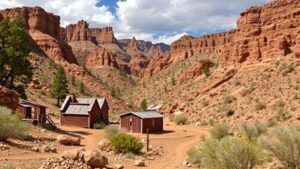The Role of Wooden Drainage Systems in Early Shaft Mining
The Role of Wooden Drainage Systems in Early Shaft Mining
The history of mining is deeply intertwined with the quest for valuable minerals, and early shaft mining represents a significant evolutionary step in this pursuit. Among various innovations that supported these efforts, wooden drainage systems were crucial in enhancing efficiency and safety. This article explores the function and importance of these systems in early shaft mining operations.
Understanding Shaft Mining
Shaft mining involves creating vertical or near-vertical tunnels to access ore deposits located deep underground. This method was crucial for extracting minerals such as gold, silver, and copper during the mining booms of the 19th century. But, one of the significant challenges faced by miners was managing water inflow, which posed risks of flooding, rock instability, and health hazards.
Function of Wooden Drainage Systems
Wooden drainage systems were designed to channel groundwater away from mining shafts, thereby safeguarding miners and their equipment. These systems were composed of timber frames and planks, often crafted from readily available materials such as pine or fir, which were reinforced and built to sustain the water flow while maintaining structural integrity.
Structural Design
The design of wooden drainage systems typically involved:
- Trench Systems: Shallow trenches dug along the mineshaft that directed water towards designated drainage points.
- Flumes: Wooden flumes created to carry water away quickly and prevent flooding within the mine.
These components worked together to form an effective network that facilitated the removal of excess water, ensuring mine safety and operational efficiency.
Historical Case Studies
One prominent example of a successful wooden drainage system can be found in the Comstock Lode in Nevada during the mid-1800s. As mining operations expanded, perpetual groundwater issues arose. Miners implemented a sophisticated wooden drainage system, which significantly reduced water levels within shafts and improved access to deeper ore deposits.
Similarly, the Cornish Mining technique used during the 18th and 19th centuries often featured wooden drains to manage the inflow of water. These wooden systems not only exemplified the ingenuity of miners but also demonstrated the effective use of local resources, showcasing the practical benefits of utilizing timber in harsh underground conditions.
Challenges and Limitations
Despite their effectiveness, wooden drainage systems were not without challenges. Issues such as:
- Wood Rot: Over time, wood can succumb to rot due to moisture exposure, necessitating frequent repairs.
- Pest Infestation: The presence of wood attracted pests and contributed to deterioration.
These factors frequently required miners to replace sections of the drainage systems, leading to increased labor costs and efforts in maintaining the shafts.
The Transition to Modern Techniques
As mining technology progressed in the late 19th and early 20th centuries, wooden drainage systems gradually fell out of favor. The advent of metal and concrete drainage solutions offered increased durability and efficiency. But, understanding the historical significance of wooden systems is essential for appreciating the evolution of mining engineering practices.
Conclusion
Wooden drainage systems played an integral role in the safety and effectiveness of early shaft mining. By managing groundwater and ensuring operational continuity, these systems illustrate the ingenuity of early miners in adapting to the challenges posed by underground mining environments. Modern mining practices owe a debt of gratitude to these early innovations, underscoring the importance of learning from historical methods.
For contemporary mining operations, analysis and understanding of past methods can inspire modern solutions and innovations in water management and shaft stability.

